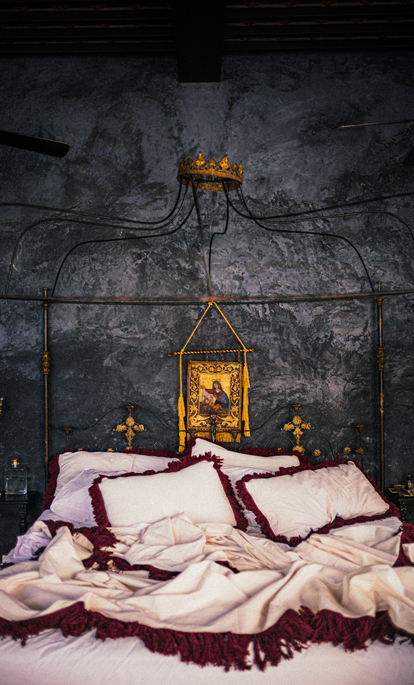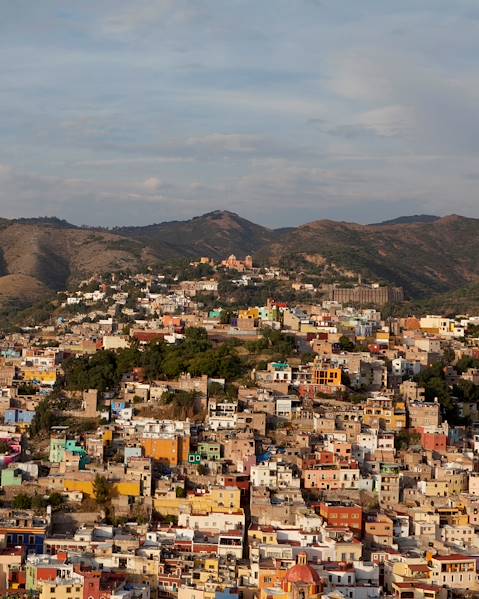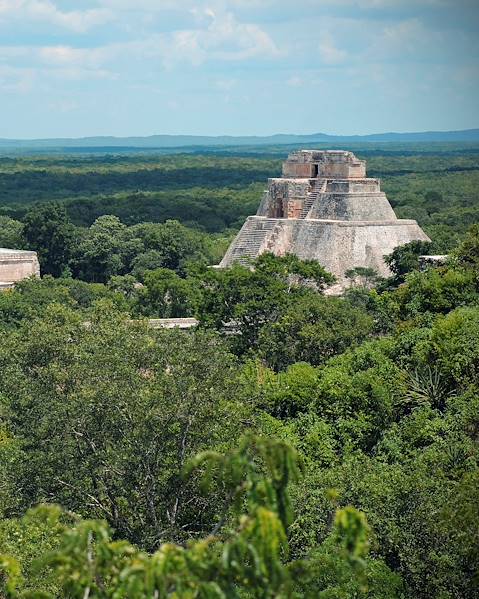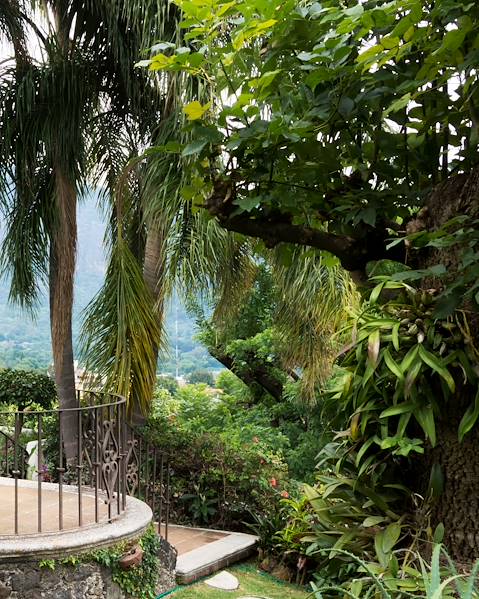Population
128,152,547 (2019)
Official language
Spanish.
Languages spoken
Many different languages are spoken in Mexico and most of the population are multilingual. There are 68 officially recognised languages, 63 of which are indigenous. The main one is Nahuatl, the ancient language of the Aztecs, used in the country's centre. Mayan is spoken in Chiapas and Yucatan, while the Zapotec family of languages are predominant in Oaxaca and Veracruz.
People
Following the Spanish colonisation, contemporary Mexican society is divided between mestizos and indigenous populations. Mestizos account for around 60% of the total population, against around 20% of Amerindians - Mexican Native American - descent, who are divided into many communities each speaking their own language. Other minorities and white Europeans complete the ethnic picture.
Religion
The absolute domination of Catholicism is declining gradually in Mexico, but it is still the religion of approximately 85% of Mexicans. A small number of Jehovah's Witnesses, Adventists and Mormons do exist and grow in number every year. Mexico also has 10% ‘traditional’ Protestants and 5% Jews. Indigenous beliefs have not disappeared from the religious landscape and they are often incorporated into Catholic practices. The strongest symbol of this fusion is the worship that many Mexicans devote to the Virgin of Guadalupe. This celebrates the apparition of the Virgin Mary to a young indigenous man, Juan Diego, shortly after the Spanish conquest. All the more striking is that it took place on Mount Tepeyac, where the Aztecs had built a temple to Tonatzin, the ‘mother of the gods’. A chapel and a basilica were built there, which quickly became a major pilgrimage and is now the world's third most-visited sacred site. In 2002, Pope John Paul II canonized Juan Diego, who became the first Indigenous saint in the Catholic calendar.
National Holiday
15 and 16 September: Independence Day. At 11pm, in the central square of every city, the mayor shouts “Viva Mexico!” three times. This ceremony is called El Grito and celebrates the start of the uprising against Spain, initiated by the priest Miguel Hidalgo in 1810. In Mexico City, the cry is made by the President of the Republic.
Holiday Schedule
- January 1: New Year's Day.
- February 5: Constitution Day.
- February 24: Flag Day.
- March 21: Benito Juarez’s Birthday.
- In late March-early April: Holy Week (Semana Santa). The Holy Thursday and Friday are holidays and this is the biggest party in Mexico.
- May 1: Labour Day.
- May 5: Cinco de Mayo.
- 2nd half of July: Festival of Guelaguetza in Oaxaca.
- 15 and 16 September: National Independence Day.
- October 12: Day of the Races.
- 1 and 2 November: All Saints Day and Day of the Dead. A legendarily eerie yet festive Mexican event – sugar skulls, skeletons and miniature coffins are sold everywhere, there are processions to cemeteries where tombstones are beautifully decorated. Family and friends of the deceased eat, drink and sing all night.
- November 20: Revolution Day.
- December 12: Feast of Our Lady of Guadalupe.
- December 25: Christmas.
History
Mexico’s first great civilisation, the Olmecs, were born around 1200 BCE. They worshiped the jaguar and left impressive sculpted heads. Then came, in the first millennium, Mesoamericans (Mexico City area), the Zapotecs (Oaxaca) and Maya (southern Mexico). Each left their own mark on Mexico – Mesoamerican built Teotihuacan and worshipped a feathered serpent, Quetzalcoatl; the Zapotecs left substantial remains at Monte Alban. The Maya, meanwhile, built hundreds of city states, the largest of which are Chichen Itza, Uxmal, Palenque, Bonampak and Tikal (now in Guatemala). They also worshiped a feathered serpent called Kukulcan. The clergy held the real power – Maya people believed their priests talked directly to the Gods. They developed mathematics and astronomy and even produced their own books, called codices. The Spaniards, unfortunately, during their conquest of the land in the 16th century, destroyed almost all of the codices. A little shaky in the tenth century, the arrival of the Toltecs, who brought iron and silversmithing, gave the Mayas force for two centuries. In 1325, people from the north, the Aztecs, came onto the scene and founded the city of Tenochtitlan in the Anahuac Valley. The Aztecs were military fighters who used force to extend their domination; Huitzilopochtli, the Aztec god of war, demanded blood and many victories were attributed to him. At its height, the Aztec Empire ruled around 5 million people – they were clever administrators and ingenious engineers. The social, political and religious structure was complex, efficient and tightly controlled.
When Spanish conquistadores landed in 1519, Mexico was well contained. Hernán Cortés (1485-1547) arrived and founded the state of Veracruz and continued, unhindered, to Tenochtitlan, where he settled with the blessing of the Emperor Moctezuma II (1480-1520). In June, 1520, dramatic events unfolded that almost cost Hernán Cortés everything in a night known as La Noche Triste (the ‘night of sadness’). The Spaniards, laden with gold, tried to flee Tenochtitlan after supposedly killing the emperor, Moctezuma II, which threatened an Aztec uprising. Many Spaniards were killed. The following year, Cortés, leveraging the deaths, brutally reconquered Tenochtitlan. On its ruins, Mexico City was built. In 1535, the country became a Viceroyalty of New Spain. Native culture was destroyed, although it partly found refuge in Catholicism. Massacres, abuse and disease ensued – 70% of Indigenous people disappeared during the following decades.
In the early nineteenth century, Creole society was ripe for nationalist sentiment. It was a cleric, Miguel Hidalgo y Costilla, who first launched a move in this direction in 1810, but his attempts were quickly suppressed. But just as quickly, more nationalist movements followed and after many years of fighting, in 1821, independence was granted to Mexico. The Empire was proclaimed in 1822, but abolished in favour of a Republic in 1824. In 1833 General Santa Anna (1794-1876) took the helm of the country as President for the first time. In 1846 the Mexican-American War began primarily over the territory of Texas. The war ended in 1848 with the Treaty of Guadalupe Hidalgo, in which the U.S. gained territory including California, New Mexico, Arizona, Utah, and Nevada. At this time Mexico’s President, Benito Juarez, decided to suspend payment of external debt, which triggered the ire of the Spanish, British and French, who each sent troops to occupy Veracruz. Spain and Britain soon retreated, but French emperor Napoleon III had other ideas and intended to conquer Mexico as a satellite state, with Archduke Maximilian of Austria as a leader he could manipulate. The French were eventually defeated and Mexicans still celebrate this victory today with a national holiday.
From 1876 to 1911, the dictatorship of Porfirio Diaz (1830-1915) combined development and growing inequality. The regime was the source of a decade of civil war, in which leading figures in the Mexican Revolution came to light, in particular, Emiliano Zapata and Francisco ‘Pancho’ Villa. Finally, in 1934, Lazaro Cardenas became president and applying the National Revolutionary Party Program (NRP, later becoming PRI - Institutional Revolutionary Party), carried out agrarian reform and nationalised the oil industry. The country was stabilised, and the economy revived. Mexico entered World War II on the US side. It became a member of the UN in 1945.
The economic boom of the post-war period was suddenly challenged by the oil shock of 1973. The country entered into a recession, but the discovery of large deposits of oil in 1976 helped various industries and initiated profound social reforms. In 1982 Mexico faced a severe economic crisis, in which the peso lost 50% of its value, and 12 years of austerity and privatisation followed. In 1994 however, the economy began to recover and that year, Mexico joined the US and Canada in the North American Free Trade Market. In the state of Chiapas, the Zapatista Army of National Liberation appeared to represent the cultural and social demands of native people. While US aid during the Clinton administration contributed to the restarting of the economy, the Chiapas conflict hardened it. Agreements were signed then violated. In 2000, the Christian Democratic, Vicente Fox, ended 71 years of PRI power. In 2018, Andrés Manuel López Obrador became president of Mexico.
Policy
Mexico is a Federal Republic. Executive power: the president is elected every six years by universal suffrage (not re-elected). The president is both the head of state and head of government. Legislature: Parliament consists of 2 chambers, the Senate (128 senators, elected for 6 years by universal suffrage) and the Chamber of Deputies (500 members, elected for 3 years by universal suffrage).
Celebrity
One of the greatest figures of Mexican cultural life is the poet and essayist Octavio Paz (1914-1998), winner of the Nobel Prize for Literature in 1990. Carlos Fuentes (1928-2012) and Juan Rulfo (1917-1986) are also counted as some of Mexico’s literary greats.
Contemporary writers should not however overshadow the great work of the early twentieth century – authors like Mariano Azuela (1873-1952), Martín Luis Guzmán (1887-1976) and Alfonso Reyes (1889-1951). Their work, related to the 1910 Revolution, were hugely popular. With his political murals, Diego Rivera (1886-1957) is the emblematic figure of mural painting, alongside other major representatives like José Clemente Orozco (1883-1949) and David Alfaro Siqueiros (1896-1974).
Another legendary figure was painter Frida Kahlo (1907-1954), the wife of Diego Rivera, and a modern feminist icon. In politics, Miguel Hidalgo (1753-1811) launched the first call to national uprising. Another great figure, Benito Juárez (1806-1872) is, to date, the only Mexican president of indigenous origin. Emiliano Zapata (1883-1919) and Pancho Villa (1878-1923), were the legendary generals of the 1910 Revolution. ‘Hero of the peasants’, Zapata, is held as the symbol of the struggle of small farmers, embodied today by Subcomandante Marcos (Raphael Sebastian Guillen Vicente, born 1957).
Dolores del Rio (1905-1983), is also worth mentioning – an actress who could play everything with dignity – she was immensely beautiful and popular and enjoyed a career spanning more than 50 years.
Good manners
In restaurants, you may be struck by the extreme speed of service – In Mexico, it’s a sign of quality. Machoism is deeply inscribed in Mexican mentality. Times are changing and attitudes are always developing, but many traditions remain – whether drinking, bullfighting or rodeos with wild horses, masculinity is often on display here and pride is an important part of the culture. Mexicans love to chat – or ‘platica’ – as it’s known in Spanish, but it’s best to avoid any controversial subjects and refrain from criticising the government. If any issues arise during your stay, opt to stay kind, courteous and calm – there’s usually little use in getting upset and Mexicans respond better to a held-together persona. Schedules can be rough throughout the country – buses are often late and it’s rare an appointment is on time. In historical sites, tripods are usually prohibited, and the use of a camcorder is often subject to the settlement of a tax of about 4 euros. For professional cameras, you need to obtain special permission and pay the necessary fees.
Shopping
The richness, diversity and creativity of Mexican crafts is huge and often surprising. Local markets are excellent and you’ll be spoilt for choice when meandering the stalls, each packed from floor-to-ceiling with eye-catching wares. Pottery is an ancestral tradition of Mexico that requires careful work and often uses original techniques. The best pottery can be found in Oaxaca, Puebla, Tonala, Tlaquepaque and Guadalajara. Fabrics and baskets are another Mexican tradition that provides clothing, scarves, blankets, baskets and reed mats. These are the specialties of Jocotepec, Patzcuaro, Merida, Veracruz, Oaxaca and Chiapas. Talavera pottery is famed for its beautiful coloured patterns, and many creators still use the same manufacturing process that’s been used for the last 200 years. For the best Talavera pottery, head to Oaxaca, Guadalajara, Tonala and San Cristobal las Casas. From boots to handbags, belts to wallets, good quality leather is offered at attractive prices, especially in Guadalajara, Leon and Monterrey. Mexico is also the largest producer of silver in the world – the capital is in Taxco, but you’ll also find gorgeous silverware in Tlaquepaque, Mexico, Zacatecas and Guanajuato. And that’s just the beginning – other fantastic shopping opportunities are everywhere, from intricate copper pieces, woodwork furniture and sculptures to papie mâché figurines and famous trees of life, (árboles de la vida), eye-popping clay sculptures covered with colourful figures.
Food
Famed the world over for its heavenly flavours and as one of the most sociable cuisines, Mexican food in its birthplace is everything you could wish for. With many regional variants, the base of Mexican cooking remains the tortilla. According to the particular dish you’re craving, the tortilla becomes a taco, enchilada or quesadilla. These essential dishes are always flanked by other national specialties – delicious guacamole and salsas in all shapes and sizes. Among the preparations, generally you’ll also find soup, where most Mexican meals begin, and the country’s menu contains many including Mexican bean and spicy vegetable. The world is indebted to Mexico for its widespread use of beans, corn, squash, tomatoes, chocolate, avocado, papaya, guava, vanilla, dozens of spices and hot peppers in its recipes. You can also use your stay to discover a wide range of tropical fruits, which have never tasted better – pineapple, banana, papaya, mango, guava, pomegranate, or rare finds like mamey sapote, sapodilla, cherimoya or prickly pear.
Drink
Tap water is not drinkable and even Mexicans avoid drinking it. The national drink is, of course, tequila. It is extracted from a cactus, agave – the juice of which is distilled once fermented. Among the cactus alcohols, pulque is also worth a mention, which existed at the time of the Aztecs. The second national drink is beer. If Sol and Corona are now known around the world, there are many other local varieties. Mexico is another option and the country produces wine in Baja California and Hidalgo. Finally, do not forget Mexican cocktails! Bypass your usual pina colada or margarita – Mexicans take cocktails seriously and there are usually a number of options on bar menus. Soft drinks and fruit juices are everywhere – there are all kinds available and they are all delicious.
















